Range Rover Evoque: Liftgate Alignment, Front Door
Liftgate Alignment
NOTE: Some variation in the illustrations may occur, but the essential information is always correct.
1. With the liftgate closed, check the alignment of the liftgate to the roof panel and bodyside panel. The liftgate should be central in its aperture.
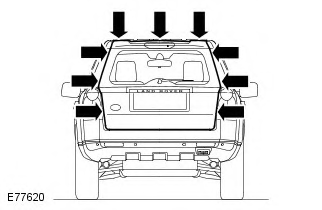
2. Refer to: Rear Spoiler (501-08 Exterior Trim and Ornamentation, Removal and Installation).
3. Loosen, but do not remove the liftgate hinge bolts.
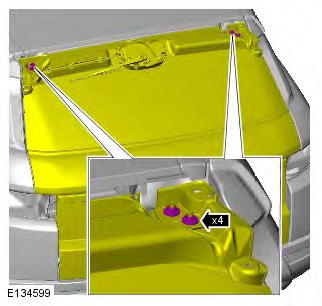
4. NOTES:
Make sure that the tailgate is flush with the fender at point 1.
Make sure that the tailgate is recessed by 1.5 mm in relation to the fender, at point 2.
Position the liftgate central to the aperture.
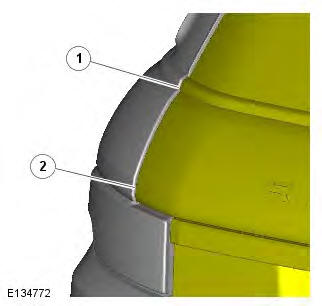
5. Tighten the liftgate hinge bolts.
Torque: 24 Nm
6. Check for correct operation of the liftgate, and if necessary adjust the liftgate striker.
Refer to: Liftgate Striker Adjustment (501-14 Handles, Locks, Latches and Entry Systems, General Procedures).
Front Door
Removal
NOTES:
Removal steps in this procedure may contain installation details.
Some variation in the illustrations may occur, but the essential information is always correct.
1. Disconnect the battery ground cable.
Refer to: Specifications (414-01 Battery, Mounting and Cables, Specifications).
2. CAUTIONS:
Protect the surrounding trim to avoid damage.
Make sure the upper and lower hinge bolts are replaced.
NOTE: This step requires the aid of another technician.
Torque:
Torx bolt 24 Nm
M8 bolt 30 Nm
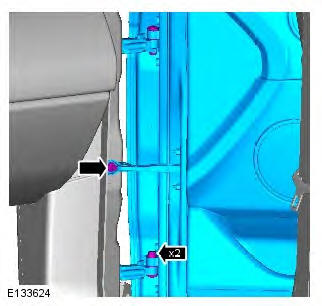
3. NOTE: This step requires the aid of another technician.
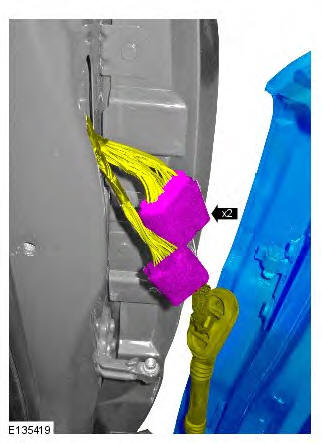
4. NOTE: Do not disassemble further if the component is removed for access only.
Refer to: Exterior Mirror (501-09 Rear View Mirrors, Removal and Installation).
5. Refer to: Front Door Window Regulator and Motor (501-11 Glass, Frames and Mechanisms, Removal and Installation).
6. Refer to: Front Door Latch (501-14 Handles, Locks, Latches and Entry Systems, Removal and Installation).
7.
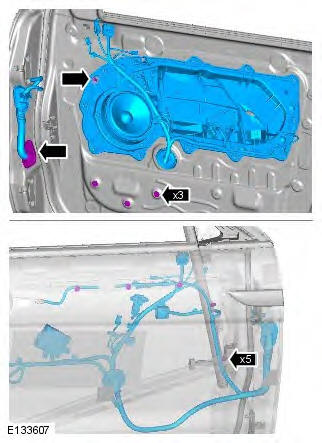
8. Torque:
Bolt 35 Nm
Nut 12 Nm
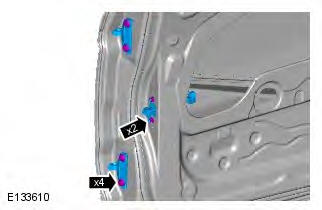
9. Torque: 1.2 Nm
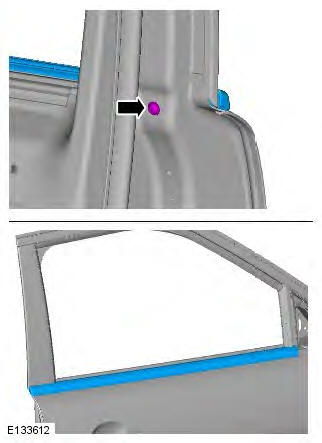
10.
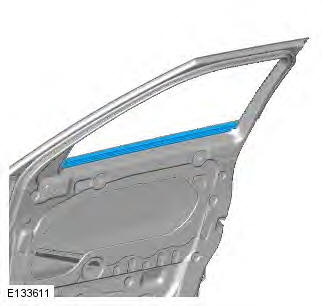
11. NOTE: Note the position of the components prior to removal.
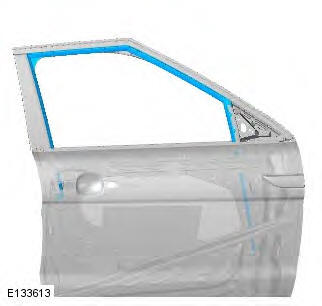
12. Torque: 1.2 Nm
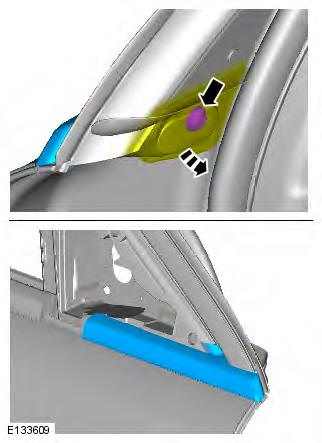
13.
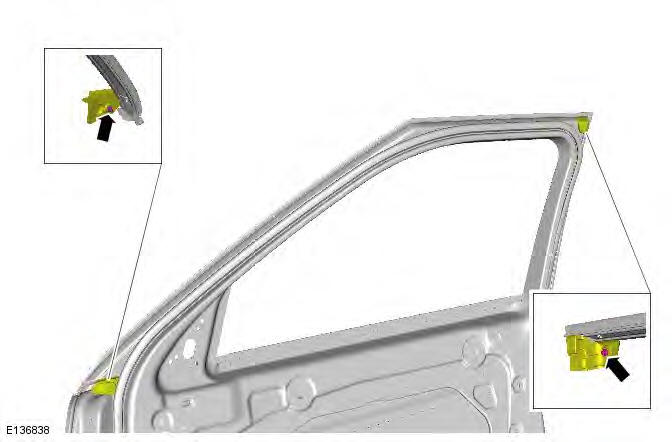
14. NOTES:
Vehicles with 3-door shown, vehicles with 5-door require 11 retaining clips detached.
Make sure the top corner of the trim panel is installed to the locating tang, as indicated.
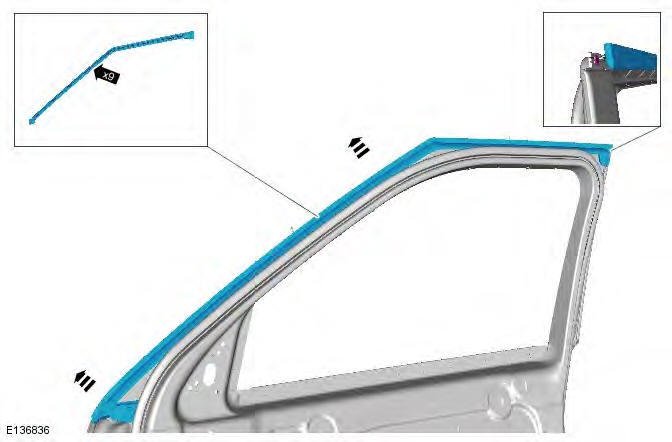
15. Torque: 1.2 Nm
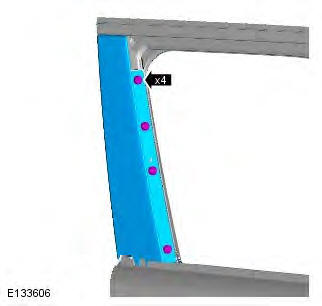
16. CAUTION: Protect the surrounding paintwork to avoid damage.
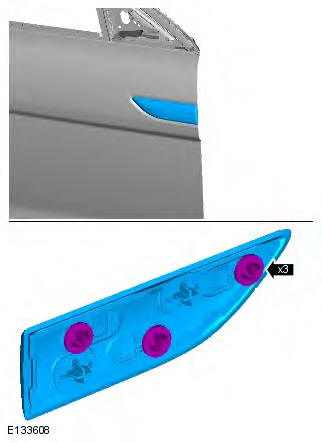
Installation
1. To install, reverse the removal procedure.

